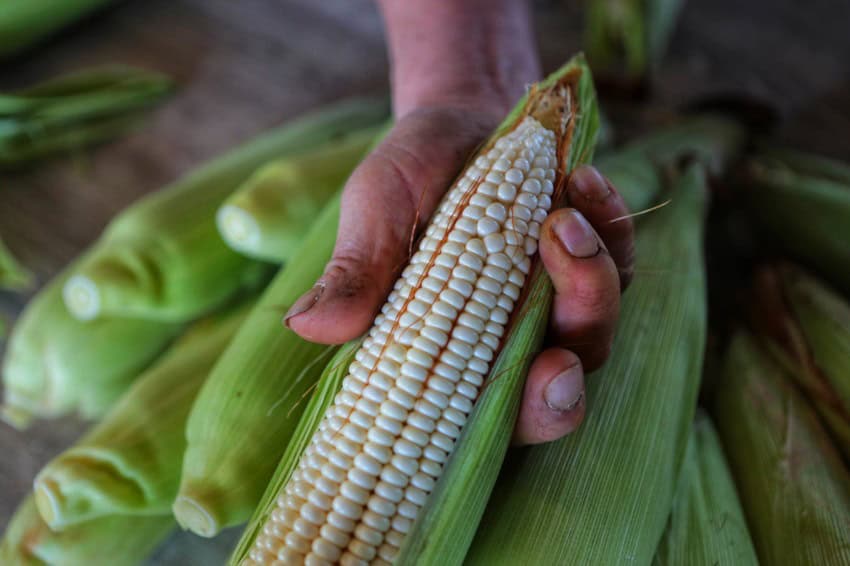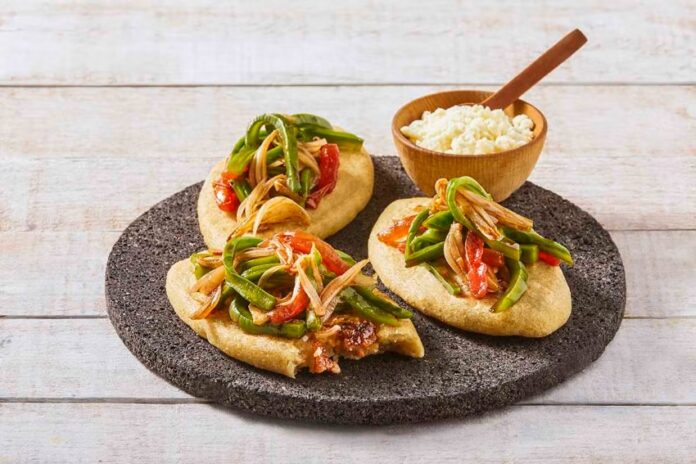When we talk about corn in Mexico, I have mentioned before that our culture truly owes a great deal to maize. Our ancestors were not only responsible for its domestication but also for discovering nixtamalization and learning to prepare it in countless ways, like the one we will discuss in this article.
Now, while I have no concrete evidence to support this, I like to imagine that it happened something like this: A Mesoamerican mother, long ago, was contemplating how to feed her family — she wanted something delicious, easy to carry and eat, not too heavy and that wouldn’t take all day to prepare.

Suddenly, she exclaimed, “Eureka! I’ll make tlacoyos!”
Although we may never know the exact origins of tlacoyos, we do understand that they emerged from the need for efficient nourishment — and they stand as a perfect example of pre-Hispanic cuisine.
What is a tlacoyo?
The maize had to be prepared in a practical and portable way, leading to the creation of the tlacoyo — or tlaoyo in Nahuatl, which means “deshelled corn empanada.” This revolutionary dish not only survives to this day but is also the origin of several other meals that we will explore in future articles.
A tlacoyo is an oval-shaped empanada that is cooked on a comal and filled with various ingredients. You could describe it as an archaeological recipe — a culinary time capsule that showcases the techniques and flavors of pre-Hispanic cultures, which thrived thanks to corn.
According to Culinary School of Mexico historian Edmundo Escamilla Solis, tlacoyos were mentioned in the writings of the conquistadors of Mexico in the 16th century, suggesting that they existed before the arrival of the Spanish colonists. There is also evidence that tlacoyos emerged sometime between 200 and 900 B.C., according to the science journalist Charles C. Mann, author of “1491: New Revelations of the Americas Before Columbus.”

The process of nixtamalization — cooking corn with lime and water — transformed maize into a highly nutritious ingredient. When combined with other crops from the milpa, such as beans or fava beans, tlacoyos became a sustaining meal for people working or traveling long distances.
Tlacoyos gave Indigenous people the energy for long days of walking and farming, which is pretty impressive if you think about it.
From tlacoyo prehispánico to tlacoyo mestizo
Initially, tlacoyos were filled with mashed legumes such as peas, fava beans or black beans. However, the arrival of the Spanish brought changes to the fillings. With the introduction of livestock, ingredients like cheese, cream and meat began to be used in tlacoyos. The Spanish developed a particular fondness for tlacoyos, and one creative individual had the brilliant idea to fill them with ricotta-style cheese, known as requesón. This combination proved to be a hit and has become one of the most beloved and popular versions of tlacoyos ever since.
The modern tlacoyo
Voir cette publication sur Instagram
Today, tlacoyos are not served alone; they are topped with a refreshing nopal cactus salad made of tomatoes, cilantro and onion. Some people add crema and a sprinkle of fresh crumbled cheese. This already nutritious tlacoyo gets a delicious upgrade from the fresh, tangy nopal salad.
Taking the first bite of a tlacoyo is an unbeatable experience. The flavors of blue or white corn combine with requesón, fava beans, black beans, alverjón (a type of pea) — and, in some regions, even pork crackling — is an experience you can’t miss. When topped with nopales and cheese, it’s pure bliss. This humble, no-frills dish is comforting and a must-try for everyone.
Hijos del tlacoyo
Depending on who you ask, sopes, gorditas and huaraches are considered descendants of tlacoyos. Some argue that gorditas have their own independent history, that sopes are just as ancient as tlacoyos and that huaraches were a more recent happy culinary accident. In the upcoming articles, we will explore the stories of these three dishes.

Make your own tlacoyos
Here’s a recipe for when the craving hits but there’s no tlacoyo stand nearby.
Ingredients
Instructions
- Mix the corn flour with salt, then gradually add hot water until you achieve a soft, pliable dough. Cover the dough with a damp cloth and let it rest for 5 minutes to ensure it hydrates properly.
- Divide the dough into six equal portions and roll each into a ball. If desired, place each ball between two sheets of plastic to prevent sticking.
- Using your hands, flatten each ball into a disc about 1 cm thick, leaving the center slightly thinner. If you have a tortilla press, you can use it to flatten the dough.
- Place 1 to 1½ tablespoons of filling (such as beans or requesón) in the center of each disc. Visualize the tlacoyo divided into three sections, then fold the outer thirds over the filling. Seal the tips and press to shape the tlacoyo into an oval.
- Heat a comal or griddle over medium heat and cook the tlacoyos for 2 to 3 minutes on each side. They are done when the masa changes color and appears firm and cooked through.
- Serve hot, topped with chopped onion, crumbled cheese and salsa to taste.
Amigos, have you tried tlacoyos yet, friends? Don’t you feel that they carry an ancient, delicious and humble flavor in every bite? What’s your favorite filling? I’ll be here, eagerly waiting for your comments.
María Meléndez is a Mexico City food blogger and influencer.
